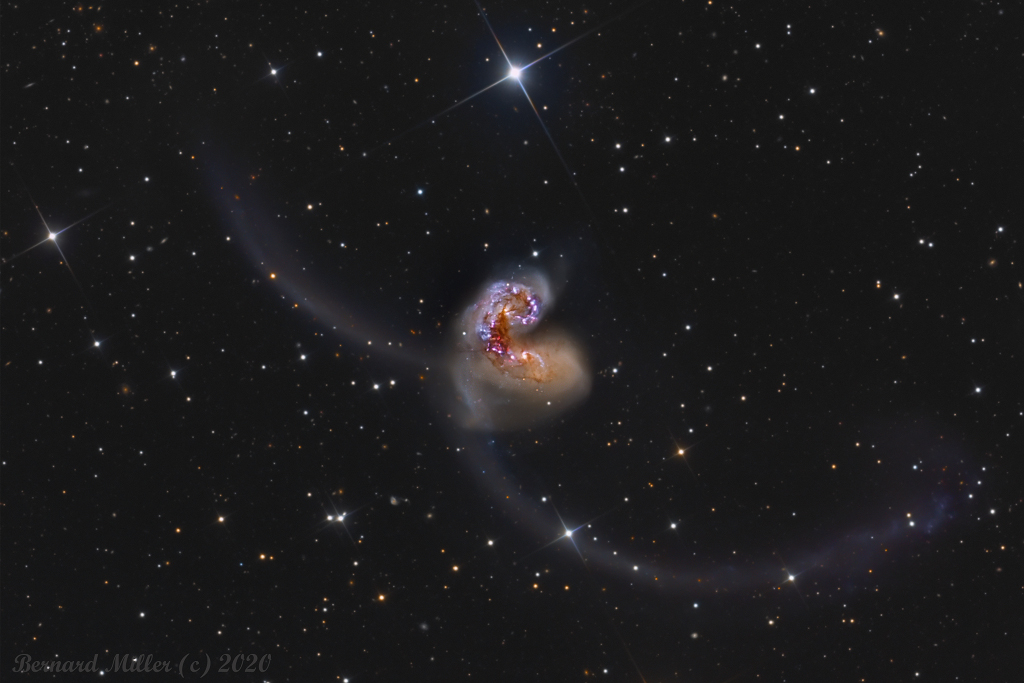2021年03月27日
Exploring the Antennae
Image Credit & Copyright: Bernard Miller
Explanation: Some 60 million light-years away in the southerly constellation Corvus, two large galaxies are colliding. Stars in the two galaxies, cataloged as NGC 4038 and NGC 4039, very rarely collide in the course of the ponderous cataclysm that lasts for hundreds of millions of years. But the galaxies’ large clouds of molecular gas and dust often do, triggering furious episodes of star formationi near the center of the cosmic wreckage. Spanning over 500 thousand light-years, this stunning view also reveals new star clusters and matter flung far from the scene of the accident by gravitational tidal forces. The remarkably sharp ground-based image includes narrowband data that highlights the characteristic red glow of atomic hydrogen gas in star-forming regions. The suggestive overall visual appearance of the extended arcing structures gives the galaxy pair its popular name – The Antennae.
Tomorrow’s picture: floating away
探索触须星系
影像提供与版权: Bernard Miller
说明: 在南天的乌鸦座内,二个离我们大约6千万光年远的大星系发生了碰撞。在这种历时数十亿年的大型剧变事件中,这二个编号为NGC 4038和NGC 4039的星系内之恒星,却鲜少发生碰撞,只有它们巨大的分子云和尘埃云会受到影响,因而在遗留的宇宙残骸之中心附近,触发了一波波猛烈的恒星形成活动。这幅涵盖大约50万光年天区的精采影像,也呈现了新诞生的星团以及被重力引潮力远远抛出的长条状物质。这幅精采的清晰地面望远镜影像,融合了窄波段数据,以突显恒星形成区的原子氢气发出的泛红特征幅射。此例星系碰撞所造成的弯曲长条构造,让这对星系博得触胡星系的昵称。
明日的图片: floating away







